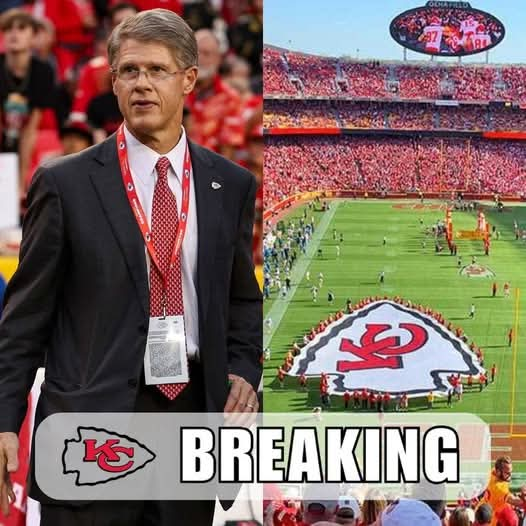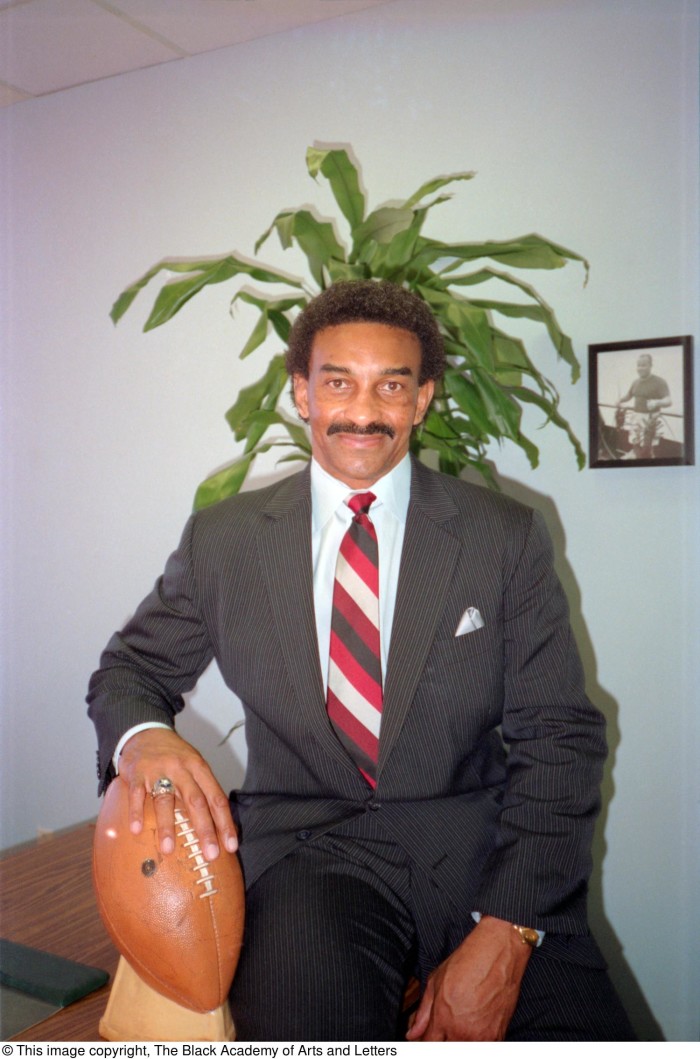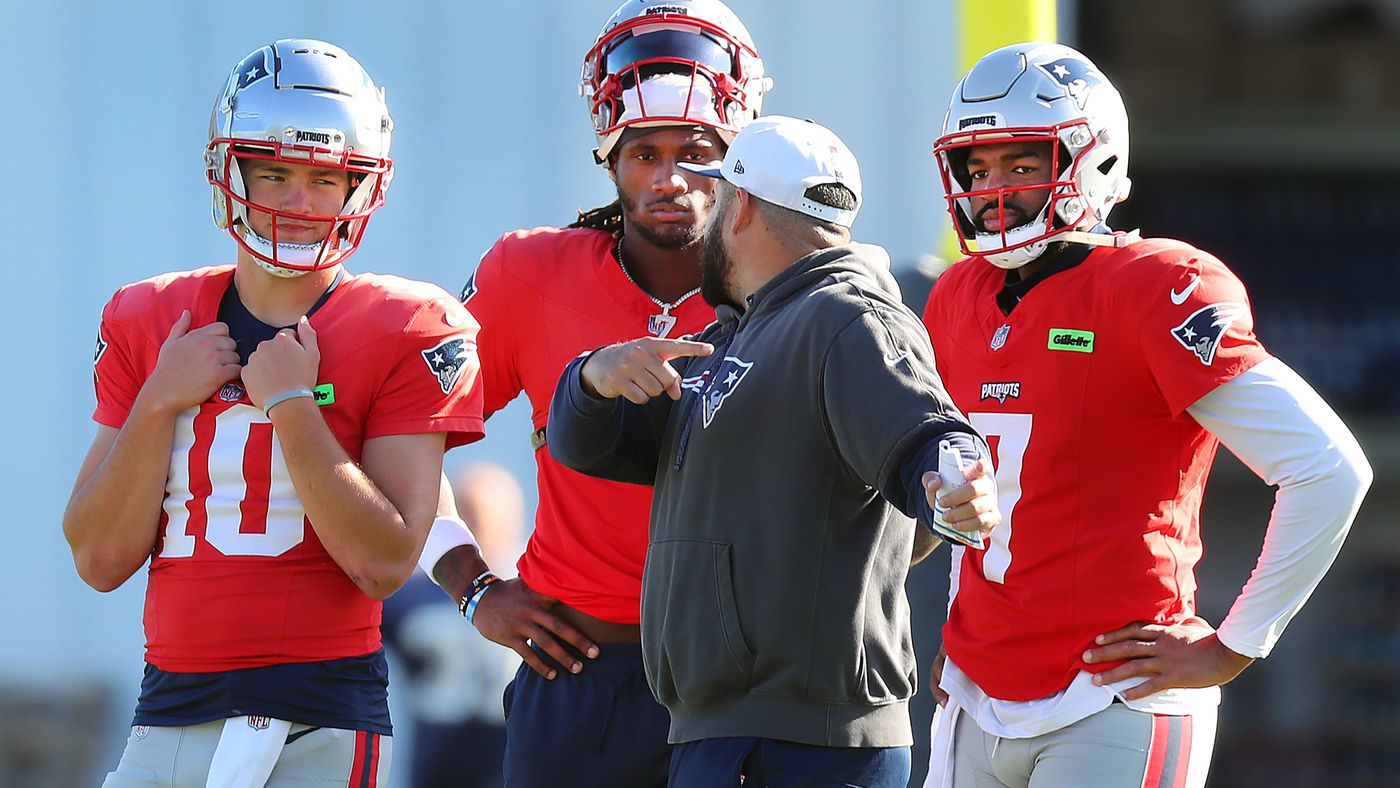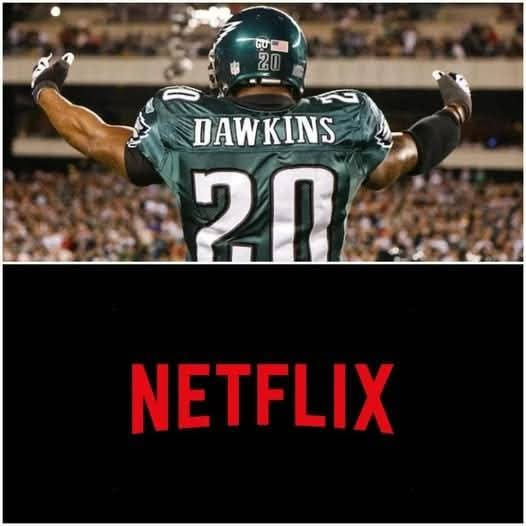
The Kansas City Chiefs have never been shy about embracing boldness, ambition, and the future. But their latest announcement has redefined the very concept of vision in professional sports. In a move that has sent shockwaves not only through the National Football League but across the entire sporting world, the Chiefs revealed a staggering \$656.5 billion stadium renovation plan—an amount so astronomical it rivals the GDP of small nations. Dubbed by fans and analysts alike as the “NFL’s Crown Jewel,” this renovation initiative isn’t just about enhancing Arrowhead Stadium—it’s about transforming it into a global sports marvel. With futuristic technology, cutting-edge luxury features, and an expanded seating arrangement that will eclipse every other NFL venue, the Chiefs are planting their flag as the undeniable leaders in sports infrastructure innovation.
Team CEO Clark Hunt, speaking from a press conference platform that resembled a tech summit more than a traditional sports briefing, described the project as “a gift to Kansas City, to football, and to the fans who define our legacy.” The announcement was punctuated with visuals of digital renderings that seemed more science fiction than stadium design. Flying drone taxis to deliver VIPs, holographic replay systems, AI-integrated security networks, and sustainable energy systems more advanced than any current green facility—this renovation reads like a blueprint for a stadium on Mars.
The financial scope alone is nearly unfathomable. At \$656.5 billion, this will be the most expensive stadium-related endeavor in the history of global sports, dwarfing the costs of even the most extravagant Olympic infrastructure and the opulent soccer palaces of the Middle East. Hunt made it clear that this wasn’t about frivolous spending but about investing in the long-term future of the franchise and solidifying Kansas City as a sports epicenter for the next century. The funding, according to team sources, will come from a combination of private investment, state-of-the-art naming rights partnerships, and futuristic revenue streams like augmented-reality subscription platforms and global fan-based ownership tokens.
Arrowhead Stadium, already renowned for its thunderous atmosphere and iconic architectural design, will retain its historical bones but be draped in innovation. One of the central features of the renovation is a fully immersive 360-degree holographic replay system, allowing every seat—yes, even those in the newly expanded nosebleeds—to experience plays in real time from any angle. Holograms projected from thousands of micro-emitter lenses embedded in seat backs and railings will allow fans to “see” the action as if they were right in the middle of a Patrick Mahomes touchdown run.
Speaking of Mahomes, the Chiefs’ franchise quarterback—who many already view as a generational player and future Hall of Famer—called the announcement “insane in the best way possible.” Mahomes, who already signed a half-billion-dollar contract that set records of its own, has now become a walking symbol of the Chiefs’ commitment to legacy-building. “This is going to change how people watch football forever,” he said. “And doing it right here in Kansas City? That’s everything.”
Luxury will also take on an entirely new meaning at the revamped stadium. Beyond standard VIP suites and lounges, the stadium will include “Skyview Lodges”—suspended luxury cabins that float via magnetic levitation rails around the stadium’s upper rim, offering ever-shifting perspectives of the game. Each Skyview Lodge comes with personal chefs, climate control pods, and virtual reality interfaces allowing guests to toggle between real and simulated views of the action. There will also be underwater spas in the end zone clubs, curated by celebrity wellness architects, offering everything from cryotherapy to high-altitude oxygen chambers to guests between quarters.
While the extravagance is grabbing headlines, the Chiefs are also investing heavily in accessibility and inclusivity. The stadium will feature the most expansive set of ADA-compliant amenities in the league, along with sensory-friendly suites for neurodivergent fans, multilingual AI translators built into seat panels for international guests, and an affordable ticketing program ensuring low-income fans will not be priced out of the experience.
A major point of pride in the project is sustainability. The stadium will operate entirely off-grid, powered by a fusion of solar, wind, and geothermal sources. Recycled rainwater will be used for irrigation, cooling systems, and even beverage distribution. A “Zero Emissions Tailgate Zone” will be introduced in the parking lots, encouraging eco-friendly fan gatherings with electric grilling stations, biodegradable products, and vehicle charging ports that feed energy back into the stadium grid.
Seating expansion is also monumental in scale. From the current 76,000-seat capacity, the Chiefs plan to push past 100,000, making Arrowhead not only the loudest stadium in football history—but also the largest in NFL history. The layout will include multiple “districts” within the seating chart: The Red Sea, a standing-only supporters’ section filled with die-hard fans and designed to create a literal wall of sound; The Golden Gridiron, a luxury tier for VIPs, celebrities, and visiting dignitaries; and The Arrowroot Pavilion, a family-friendly zone with interactive learning pods, play zones, and direct access to youth-focused programming.
Another fascinating innovation is the implementation of biometric ticketing systems. Forget wristbands or paper tickets—in the new Arrowhead, fans will enter using facial recognition or fingerprint ID, streamlining entry and enhancing security. This technology, developed in partnership with major tech firms, promises to drastically reduce wait times while maintaining privacy and data security through encrypted blockchain storage.
The concourse areas will become a tech lover’s paradise. Augmented reality headsets will guide fans to their seats, alert them to bathroom and concession wait times, and even allow them to scan players’ uniforms for real-time stats and bio info. Meanwhile, robots staffed by AI concierges will roam the stadium, delivering merchandise and refreshments directly to fans’ seats. Entire areas will be outfitted with immersive “history zones” where fans can experience moments from Chiefs history via VR headsets, stepping into the shoes of Len Dawson, Derrick Thomas, or Travis Kelce in key moments of franchise lore.
Outside the stadium, a new entertainment district will be constructed, called “Chiefs Kingdom Commons.” This space will include hotels, shopping areas, restaurants run by celebrity chefs, and even an eSports arena dedicated to virtual football leagues. The area will be open year-round and is projected to bring in billions in tourism revenue annually to Kansas City and the surrounding region.
Critics, of course, are already questioning the necessity of such an over-the-top price tag. Detractors argue that the money could be better spent on community development, education, or housing. But Hunt and his executive team were prepared. Alongside the stadium plan, they announced a \$5 billion community investment fund tied to the project, aimed at improving schools, funding scholarships, upgrading infrastructure, and expanding public transit access to the stadium. Local leaders, including Kansas City’s mayor, praised the dual-track approach, calling it “a perfect example of civic and sports partnership done right.”
NFL Commissioner Roger Goodell, reacting to the announcement, said simply, “This changes everything.” Indeed, the league office is already exploring how this level of innovation might inspire renovations across other franchises. The Chiefs, in one single announcement, may have sparked an arms race of technological advancement across the NFL.
For fans, this news is more than an upgrade—it’s a symbol of belonging to something that is rewriting the rules. The Chiefs aren’t just building a stadium; they’re creating a futuristic city of football where legacy, technology, and fandom collide. The \$656.5 billion price tag, though shocking, underscores just how serious the franchise is about remaining on the cutting edge—not just of the NFL, but of global sports.
And while the stadium won’t be fully completed until late in the decade, the ripple effects are already being felt. Season ticket inquiries have tripled since the announcement, global interest in the Chiefs brand is skyrocketing, and Kansas City itself is beginning to feel more like the new capital of American sports. In the words of Clark Hunt, “We aren’t just preparing for the next season—we’re preparing for the next century.” And if the renderings, the ambition, and the reception are any indication, the Chiefs may very well have built a throne fit for a dynasty.



